
As the 25th anniversary of “1984” approaches us, TLH posts have covered some activities commemorating this devastating time in our history.
My most vivid memories of “1984” are watching Indira Gandhi’s funeral on television and the border of photos inside my local Gurdwara’s Langar Hall of the men who had been tortuously killed during the Khalistani movement. As I got older, I always wondered how Sikh women were impacted by these events, aside from the infamous photo of a widow crying with her child in her arms.
I read about a woman who was strongly involved in the Sikh student movement in Punjab but now lived on the East Coast (USA). At the Fremont Gurdwara, I remember the single picture of a woman who helped make the border of Shaheeds’ photos hung high in the Langar Hall. I recall the emotional testimonies of widows left deserted by our community and the Indian government in the film, “Widow Colony”. Most recently, I came across this poem, “Don’t Feel Sorry For Me, I Am The Daughter Of A Shaheed” written by woman who lost her family in the 1984 riots in Delhi.
The conflict between modern ideals of beauty and the requirements of the Sikh faith came up in a prior post. Recently, Sukhmandir Kaur Khalsa spoke eloquently on this issue in an Arkansas publication. Excerpted below are Khalsa’s perspectives on hair, beauty, and truth.
“I liken the inherent programming of the body’s ability to grow hair to truth,” Kaur said. “Truth always asserts itself and cannot be covered for long by a falsehood. Similarly, we can shave, pluck, bleach, color, trip, tweeze, and wax hair, but it will continue to be true to its programming. The hair follicle must be killed or removed to prevent hair from appearing on the face or body. . .”
Kaur had trouble with her own self-esteem in the beginning. “I had a lot of difficulty embracing my natural identity,” she said, “until I realized through a series of experiences that I was disgracing and defacing my God-given natural beauty.”
She said she developed a high degree of self-confidence through her self-acceptance. “I realize,” she said, “that many women do not have the confidence to face the world without masking themselves with cosmetic makeup and procedures such as hair removal. . .” [link]
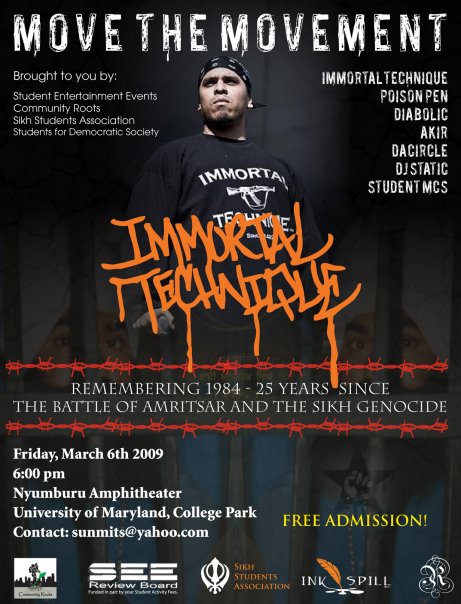 2009 marks the 25th year since the events of 1984. Tragedy and the vibrancy of life mark the ‘story’ that is 1984 and beyond. There will be many activities I assume over the next few months and I will do my best to stay informed and encourage participation by our readers, writers, and beyond.
2009 marks the 25th year since the events of 1984. Tragedy and the vibrancy of life mark the ‘story’ that is 1984 and beyond. There will be many activities I assume over the next few months and I will do my best to stay informed and encourage participation by our readers, writers, and beyond.
Last year, I wrote that I was a HUGE fan of Immortal Technique. Although some of the commenters could not move beyond his usage of profanity, I think they are losing out on a phenomenal activist and inspiration. In that post I had mentioned his usage of a Sikh analogy, it seems next month he may be doing much more. The Sikh Students Association at the University of Maryland, College Park is one of the groups playing host to an upcoming performance on March 6th, 2009 at 6pm. The tagline of one of the posters (well one that I am sure the Sikh groups are promoting) is “Remembering 1984: 25 Years Since the Battle of Amritsar and the Sikh Genocide“. For more information visit Tech’s myspace page that states that free admission will be limited to the first 500 people.
Another great initiative that was recently brought to my attention is the “One Million Chaupai Sahibs” project. The target: 1,000,000 Chaupai Sahibs by June 2009. Whether individually or collectively, I hope the TLH community actively supports the project.
I have my own memories of kirtan class. During my prepubescent days, learning the harmonium was an option, but then as puberty struck this male, I quickly switched to the tabla. My days were soon coming to an end as I was entering 8th grade and I overnight, radically I came to believe I was “too cool” for such things. While at times I regretted my decision, still in a private moment near a harmonium or piano, I can still play the notes to “Jo Mange Thakur Apne Te Soi Soi Deve”.
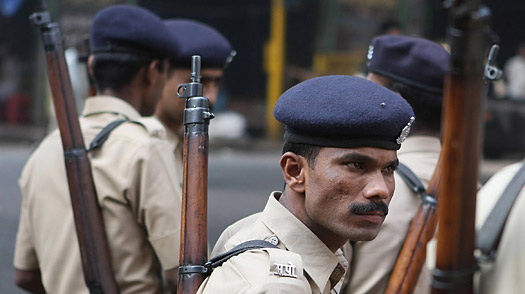
We recently posted on Ensaaf’s new report that studies the all too common practice of extra-judicial killings (usually referred to as ‘encounters’) and the mass cremations that followed by the Punjab police forces during the 1980s and 1990s. Well it looks like these practices were not limited to Punjab and these serious human rights violations are finally hitting the mainstream media.
This week, Time magazine writes about “Rights Groups Probe India’s Shoot-Out Cops“:
Scarcely a day passes in India by without news of an encounter between the police and criminals elements — “encounter” being the local jargon for shootouts involving the police, who are allowed to fire only in self-defense. On Wednesday, it was a “dreaded mafia don” who was gunned down by the Uttar Pradesh police — shot dead, and therefore unable to challenge the police account of the circumstances of the shooting. But some in India have begun to question the frequency of such “encounters”.
A few days ago we covered the story of Lakhwinder Kahlon – a father who was sentenced to life for the murder of his two-year-old daughter in B.C., Canada. Along the same lines we are hearing news about Moninder Singh Pandher who today was convicted of murdering a young girl, the first verdict in a case involving the deaths of 19 people. Pandher and his servant Surinder Koli were arrested last year after body parts were found near their home in Delhi. Most of the victims were children who had dissapeared in the area in years prior. Pandher and Koli were charged with murder, rape and abduction.
Residents say as many as 40 children disappeared in the area over two years before the crime came to light in December 2006.
The killings horrified people in India and the businessman’s Noida home was dubbed the “house of horrors”. The remains of the children were found hidden in bags. [link]
The crime shocked the country and many blamed incompetent police. Local residents said police failed to act over the abductions and murders because many of those reported missing came from poor families. A BBC article discusses this in more detail,
The UN Special Rapporteur for freedom of religion or belief visited India last year and just released her report on the country, highlighting, amo ng other things 2 matters that are of special concern to Sikhs: (1) the situation of religious or belief minorities (generally) and (2) justice for victims and survivors of communal violence (including Operation Bluestar in particular).
ng other things 2 matters that are of special concern to Sikhs: (1) the situation of religious or belief minorities (generally) and (2) justice for victims and survivors of communal violence (including Operation Bluestar in particular).
This report will serve as a great tool for future advocacy and education campaigns, as the UN Special Rapporteur is by mandate, an independent entity (though also a diplomatic entity whose mandate is funded by the States she monitors, so of course there are limits to what can be said and done). The office is also a widely respected authority, whose reports are persuasive and create pressure in courts and government offices. Having official international support and recognition of issues that have long been a struggle for Sikh activists to legitimate (lack of accountability, lack of compensation) should advance the Sikh movement to hold accountable Indian government authorities identified as responsible for innocent civilian deaths. Between this report, and the recently released Ensaaf report, 2009 looks like it’s going to be a good year for advancing accountability for crimes by Indian authorities against Sikhs in the 80s and 90s.
Last year we heard the story of Lakhwinder Kahlon, a Delta, B.C. man who had been arrested for the murder of his two-year-old daughter, Rajwinder. This past week, Lakhwinder received an automatic life term when he pleaded guilty to second-degree murder. The father, who admitted to strangling and decapitating his daughter, will have to spend 11 years in jail before he can apply for parole. A few days ago, the judge released the 911 call of Lakhwinder admitting to the horrific act. The call is chilling – Lakhwinder tells the operator that he killed his daughter by cutting her neck, that he is depressed, and that the police should come and arrest him.
While it is hard to come up with any explanation to describe why Lakhwinder murdered his daughter, several suggestions were made. In an immediate reaction to hearing the news, there was speculation that Lakhwinder was upset that he only had daughters. This suggestion was vehemently denied by Lakhwinder’s wife and the community was quick to denounce female inequality.
Outrage and sorrow have poured out in radio talk shows and letters to newspapers, including one from Tara Diakow of Richmond, B.C., who wrote: “Who will battle against the ugly stereotype that Rajvinder Kahlon’s death has unfortunately brought to many people’s minds – the seemingly disposable position of Indo-Canadian women?” In a forceful statement on Monday, Liberal MP Ujjal Dosanjh used the case to denounce the practice of aborting female fetuses, which he says continues to take place in Canadian families. [link]
Satnam Singh Gurwara, a 16-year-old refugee from Afghanistan, is currently being held in a detention center in Manchester, UK after his application for asylum was denied. His mother, is begging officials to show “humanity” and release her teenage son from the detention center. The Home Office is understood to have rejected his claim for asylum amid questions over his claimed age of 16.
Satnam Singh Gurwara says he was just 12 when he was snatched on his way to a Sikh temple in his native Afghanistan. He says he was held for two days and needed 39 stitches in his leg when he was released. But his family continued to face threats – and they decided to sell everything they owned and flee the country in April 2007. They settled in Bolton, where Satnam became a student at the community college. [link]
The Refugee and Asylum Participatory Action Research Organisation (RAPAR) is calling for the Home Office to release Satnam immediately.
 In a brutal attack, a homeless Sikh man, Navtej Singh Sidhu, in Italy was attacked and set on fire. While news of our brothers and sisters in Italy does not always feature prominently in The Langar Hall, the horrific nature of this attack has received international press and proper condemnation from Italy’s President, Giorgio Napolitano.
In a brutal attack, a homeless Sikh man, Navtej Singh Sidhu, in Italy was attacked and set on fire. While news of our brothers and sisters in Italy does not always feature prominently in The Langar Hall, the horrific nature of this attack has received international press and proper condemnation from Italy’s President, Giorgio Napolitano.
The President stated:
“By now, these cannot be considered as isolated events but as alarming symptoms of a widespread trend that is unfortunately growing,” he said.
“I appeal strongly to those who have institutional, cultural and educational responsibility to commit themselves fully to putting a stop to any display of xenophobia, racism and violence.” [link]
[Sorry for a quick digression, but it is interesting that last week I reported on TOI’s usage of religion. When reporting about Khalsa murder of Hothi, the TOI was quick to use the word ‘Sikh’ in the headline. In this attack, the TOI article’s headline is Italian President slams racist attack on Indian.]
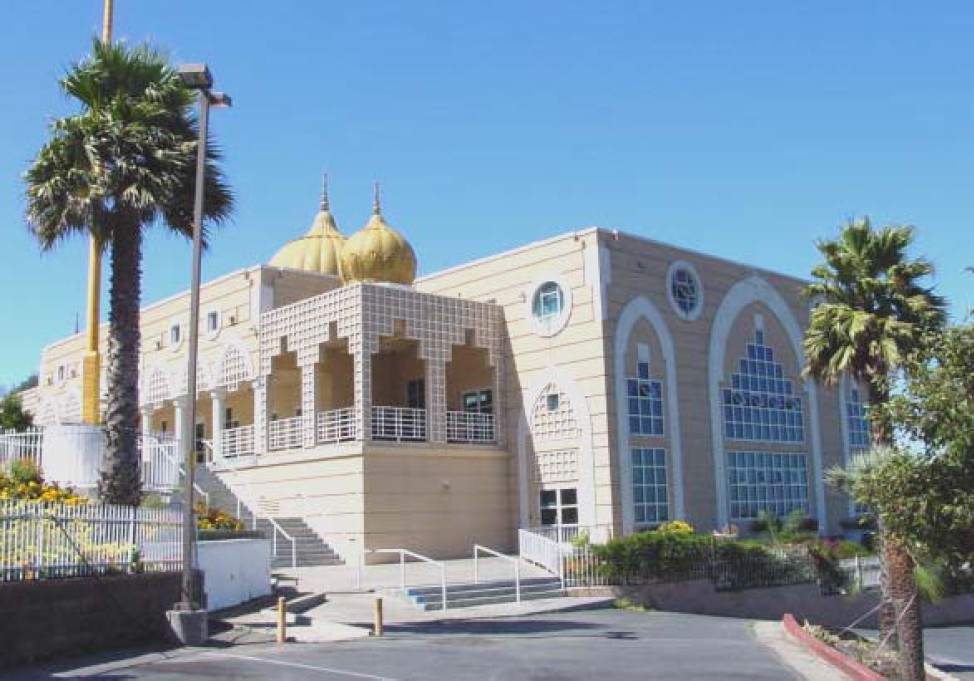 We covered the El Sobrante Gurdwara expansion — and the subsequent PR fallout — a while ago. Earlier this week, the county halted expansion plans pending a further environmental review. Local residents filed a petition for re-review, claiming the “regional service area” proposed in the expansion documents underestimated projected population growth/use in the area:
We covered the El Sobrante Gurdwara expansion — and the subsequent PR fallout — a while ago. Earlier this week, the county halted expansion plans pending a further environmental review. Local residents filed a petition for re-review, claiming the “regional service area” proposed in the expansion documents underestimated projected population growth/use in the area:
The appellants, El Sobrante Valley Planning and Zoning Advisory Committee and Quail Hill Homeowners Association, say the mitigated negative declaration does not adequately address their concerns regarding traffic, parking, noise, possible landslides, drainage, wildlife and emergency vehicle access.
Gurdwara leadership says that community members have it all wrong, though, and that they are off the mark in understanding how regional is defined and what it means for the future of the center.
Sikh leaders said they have spent the past 10 years fine-tuning the project to satisfy the county as well as neighbors.
“We have spent more than half a million dollars” — not including volunteer time and effort — “to comply “… and keep our neighbors advised…”
When we discussed this last time, I asked about the challenges we face explaining our presence and integrating into the fabric of religion in the U.S. We could revisit that conversation, but this time I thought it was curious that the project has been stalled in the face of a staggering economic slowdown in this region. Could this have generated jobs and funding at a time when the area could benefit from economic development? Or was this not worth the end result?
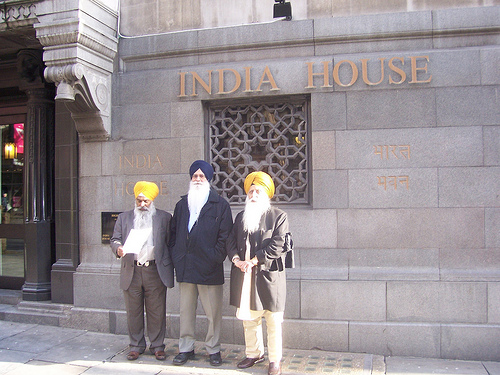 In the previous post, I had summarized a Stratfor report on the strong possibility of an Indian strike on Pakistan. Some Sikh groups in the UK, recently, released a formal appeal asking the Indian government to remove Indian nukes from the Punjab territory. Additional copies were given to the Pakistani embassy as well as the UN Security Council through the French Embassy. These Sikh groups have correctly surmised that East Punjab’s geography places it on the frontline of any conflict between India and Pakistan.
In the previous post, I had summarized a Stratfor report on the strong possibility of an Indian strike on Pakistan. Some Sikh groups in the UK, recently, released a formal appeal asking the Indian government to remove Indian nukes from the Punjab territory. Additional copies were given to the Pakistani embassy as well as the UN Security Council through the French Embassy. These Sikh groups have correctly surmised that East Punjab’s geography places it on the frontline of any conflict between India and Pakistan.
While news of the appeal has been reported in some Sikh media outlets, it is interesting that the mainstream Pakistani press has also picked up the report. The influential English-language Dawn writes:
The Sikhs maintain that they are not a party to the Indo-Pak dispute and, as non-combatants in the event of a war between the nuclear rivals, their population centre and homeland should not face what military experts have said is the likely outcome – a theatre of war in Punjab which becomes a nuclear conflict causing horrific casualties on a massive scale.[link]
Although the Hothi murder has been covered by my fellow Langa(w)riters, the case has re-appeared in the news.
To catch everyone up, in 2007 Gurparkash Singh Khalsa is alleged to have killed Ajmer Singh Hothi in Stockton, after he felt “dishonored” by a relationship and possible aborted pregnancy between Hothi and his daughter.
Khalsa is now behind bars in a San Joaquin prison. In the latest twist, the Times of India reports “Sikh Man slapped with USD 15million lawsuit.” (Why his religion is relevant, I am not sure as even the article in the Stockton Record is only “Victim’s family sues suspect in honor killing“, but I digress).
The first week of President Barack Obama’s administration has been important in several respects, perhaps most notably because of the announcements that the Guantanamo Bay facility will close and that the United States, “without exception,” will not torture. While these statements are vitally significant in their own right, they are, in my view, part of a broader theme that the new administration is putting forth — namely, that the United States will regain its position in the world and safeguard its security interests by demonstrating, through action and example, what the nation truly stands for.
This concept, put forth most eloquently by Joseph Nye, Jr., is called “soft power.” It calls for a state to attract others to its causes not just by force or economic coercion, but through attraction. The Obama administration, including newly minted Secretary of State Hillary Clinton, has rebranded this foreign policy strategy, generally naming it “smart power.” (Perhaps the term “soft power” sounds weak and overly accommodating.)
Bleak is all I can say!
Some posts require a soundtrack – click on the following to play along as you read.

Last week, Raja Parkash Badal crowned his son, the young prince, the new Deputy Chief Minister of Punjab. In a move unprecedented even in the nepotistic land that is India, Parkash Singh Badal coronated his son. Maybe it shouldn’t be so surprising in the land of five rivers, where Badal Senior had already elevated his family members to 5 of the top 18 cabinet seats.
 Is the question facing Sikhs in Oxford, England, as they try to find a central location to pray as a sangat without having to convert private property into religious property.
Is the question facing Sikhs in Oxford, England, as they try to find a central location to pray as a sangat without having to convert private property into religious property.
A religious community in Oxford is reeling after the city council ordered members of its congregation to stop worshipping at a house in Marston.
The city’s Sikh community has been meeting at 69 Cherwell Drive to pray for nearly three years. [link]
The neighbors’ chief complaints have been around parking and noise in the area. The story saddened me on two levels. First, because of the general difficulty Sikhs face in finding community space, and second, because of the underlying challenge to our practice of Sikhi.
The press, unsurprisingly, has paid significant attention to Barack Obama’s inauguration. The importance of Obama’s ascendancy to the presidency — in terms of its symbolic and historic significance as well as the substantive policy changes that will follow — cannot be overlooked. Interestingly, the Sikh aspect of Obama-mania also has reached the pages of prominent press outlets. Those reports contain some good news, and even some bad. First, the good….
 Obama gained points when he took the time to provide answers to a questionnaire about Sikh interests and concerns. Indeed, a Harvard professor on religion and the religious diaspora in America, noted: “The Sikhs heard from you too. Your response to the questions… made it clear that you know your Sikh constituents and have a real concern for the issues of discrimination, hate crimes, and profiling they have faced. Your thoughtful response to the Sikhs stood in stark contrast to that of your opponent: ‘No Response.'”
Obama gained points when he took the time to provide answers to a questionnaire about Sikh interests and concerns. Indeed, a Harvard professor on religion and the religious diaspora in America, noted: “The Sikhs heard from you too. Your response to the questions… made it clear that you know your Sikh constituents and have a real concern for the issues of discrimination, hate crimes, and profiling they have faced. Your thoughtful response to the Sikhs stood in stark contrast to that of your opponent: ‘No Response.'”
Also, the Sikh Inaugural Ball — however viewed by some Sikhs themselves (see here and here for our previous coverage) — generally has been favorably seen by non-Sikhs. The Washington Post, for example, profiled a Sikh woman’s journey from California to Washington, DC, to attend the ball. The overarching theme of the piece was how Obama’s election has reinvigorated the Sikh woman’s conception of politics and her place in America. “Now,” she said, “I feel I can call this country my home.” [Aunty Ji, Gulshan Gachoke, is pictured at right.]
The Wall Street Journal, another respected publication, reported from the ball itself. In addition to discussing the details of the ball, the Journal offered this observation: “Several people at the event drew a comparison between Barack Obama and Manmohan Singh, the first Sikh prime minister of India, a country where only 2% of the people identify as Sikh.” (I haven’t drawn this connection in my own mind, but a healthy debate may be had about whether a meaningful link between the two may be made on the basis of their minority status and respective places in the American and Indian governments.)
And now the “bad”….
As the economy’s downturn affects millions of North Americans, you wonder how documented/undocumented immigrants are impacted by it; particularly, when many left friends and families in their home-countries for economic opportunities in the West. Maple Leaf Sikh gave us some insight into how the Punjabi Sikh population is being affected in Canada.
Last week, a KGET news report (view below for video report), focused on the undocumented population in California’s Central Valley. Despite economic hard-times in Kern County, its large undocumented population, who are primarily Latino, has no intention of going back to their home-countries. Regardless of soaring unemployment rates, US economic recession, and a major downturn in California’s construction, service, and agriculture industries, many undocumented workers maintain a tremendous amount of faith in the US economy.
Here is a report by “Voice Of America” that takes a look at the Sikh Inaugural Ball (Publius covered it earlier here) as part of the Indian-American take on the Obama inauguration story. An interesting perspective following the recent discussion on the TLH post: Sikh or Indian?.

Thoughts?
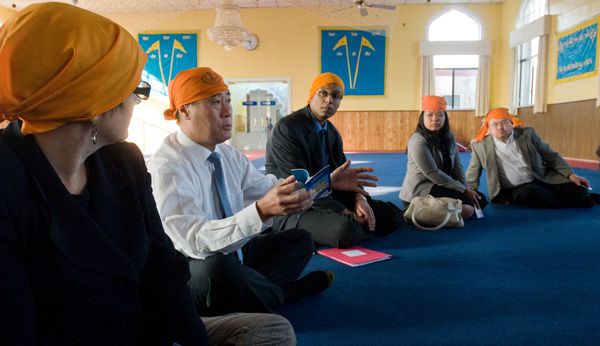
At Stockton’s Sikh Temple on Friday morning, State Sen. Leland Yee, a San Francisco Democrat, asked whether members of the faith identify themselves more as Indians or as Sikhs.
That’s a controversial point, to be honest,” temple representative Sarabjit Singh said.[link]
The question often arises in various discussions. In fact in a recent conversation about the sometimes-called Sikh (pagh salute: GK) Inaugural Ball in DC this week, one commenter lamented:
One thing that I noticed about the Sikhs, is that they always seem to feel underrepresented. By the amount of their rhetoric, a Westerner would probably think that 33% of India is compromised of Sikhs, when in fact, the figure is more like 2%. Also, Sikhs tend to not view themselves as Indians, and apparently, they don’t view themselves as being “desi”. Even this Sikh Inaugural Ball has the headline “Sikhs and Desis Celebrate Obama.” Wait a minute…so Sikhs are exclusive to Desis now?[link]
